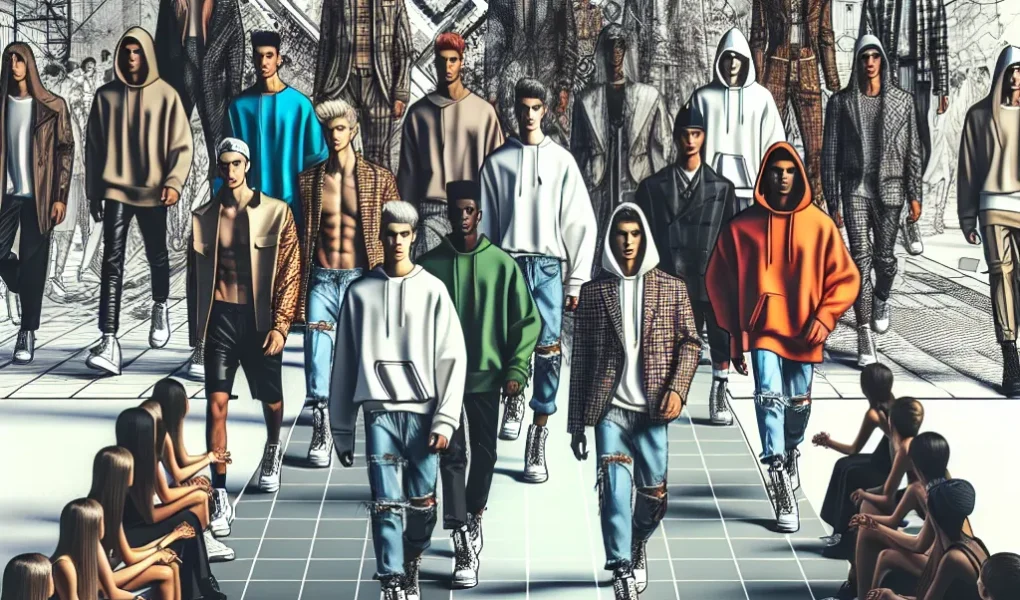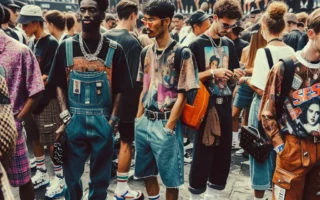Evolution of Streetwear in Fashion
Streetwear culture has undeniably made a significant impact on mainstream fashion, with its evolution playing a crucial role in shaping the current landscape of the industry. What originated as a subculture rooted in skateboarding, hip-hop, and surf styles has evolved into a dominant force in the fashion world. The evolution of streetwear in fashion can be traced back to its humble beginnings in the 1970s and 1980s when it was primarily associated with urban youth and underground music scenes.
Over the years, streetwear has transcended its niche origins and gradually seeped into the mainstream, influencing high-end designers and fashion houses. The integration of streetwear elements into luxury fashion collections has led to a blurring of the lines between urban street style and high fashion, giving rise to a new aesthetic that resonates with a wide audience. Sweatshirts, hoodies, sneakers, and graphic tees, once synonymous with streetwear, are now coveted by fashion enthusiasts and regularly featured on prestigious runways.
Furthermore, the collaborative efforts between streetwear brands and high-end labels have propelled the movement forward, fostering a symbiotic relationship between the two seemingly disparate worlds. This fusion has not only redefined the notion of luxury in fashion but has also democratized the industry, making coveted designer pieces more accessible to a broader demographic.
As streetwear continues to evolve, its impact on mainstream fashion remains undeniable. The ethos of individuality, self-expression, and authenticity that underpins streetwear culture continues to resonate with consumers, ensuring its enduring influence on the ever-changing fashion landscape.
Mainstream Brands Embracing Streetwear Aesthetics
In recent years, we have witnessed a significant shift in mainstream fashion, as major brands have increasingly embraced streetwear aesthetics. Streetwear, once associated with underground urban culture, has now permeated the mainstream fashion industry, influencing the designs of renowned fashion houses and high-street labels alike. The rise of streetwear culture can be attributed to its emphasis on comfort, functionality, and self-expression, making it especially appealing to the younger generation.
Mainstream brands have recognized the immense popularity of streetwear and have actively incorporated elements of this subculture into their collections. From luxury brands collaborating with streetwear labels to incorporating casual and sporty elements into their designs, the influence of streetwear on mainstream fashion is undeniable. This trend has not only diversified the fashion landscape but has also opened up new avenues for creativity and collaboration within the industry.
As streetwear continues to assert its dominance in the fashion world, it has prompted a blurring of traditional boundaries between high fashion and street style. The fusion of these two seemingly disparate worlds has given rise to a new paradigm in fashion, one that celebrates individuality, authenticity, and inclusivity. With mainstream brands embracing streetwear aesthetics, the cultural impact of this subculture on the fashion industry is poised to endure and evolve in the years to come.
Impact of Streetwear on Runway Fashion
In recent years, the influence of streetwear culture on mainstream fashion has been undeniable, especially when it comes to the impact of streetwear on runway fashion. Streetwear, once considered a subcultural style, has now become a dominant force in the fashion industry, shaping the way high-end designers approach their collections and runway shows.
One of the most significant impacts of streetwear on runway fashion is the blurring of traditional sartorial boundaries. Streetwear has introduced casual and athletic elements into high fashion, leading to the rise of luxury sneakers, hoodies, and oversized silhouettes on the catwalk. Designers have embraced the comfort and non-conformity associated with streetwear, incorporating it into their designs and challenging the conventional notions of luxury fashion.
Furthermore, streetwear’s influence on runway fashion is reflected in the increased collaboration between high-end fashion brands and streetwear labels. This collaboration has led to the fusion of streetwear aesthetics with high fashion craftsmanship, creating a new hybrid style that resonates with a wider audience. Moreover, the adoption of streetwear elements by luxury fashion houses has allowed them to connect with younger, more diverse consumer demographics.
In conclusion, the impact of streetwear on runway fashion is a testament to the evolving nature of the fashion industry. Streetwear’s influence has pushed boundaries, encouraged creativity, and redefined the concept of luxury in fashion. As we move forward, it is clear that streetwear will continue to shape and inspire runway fashion, blurring the lines between street style and high-end couture.
Streetwear Culture: From Subculture to Mainstream
Streetwear culture has evolved from being a niche subculture to becoming a dominant force in mainstream fashion. What was once an underground movement characterized by its associations with skateboarding, hip hop, and graffiti has now permeated high fashion, luxury brands, and the runway. The influence of streetwear on mainstream fashion can be observed in the adoption of signature streetwear elements such as hoodies, graphic t-shirts, sneakers, and oversized silhouettes by major fashion houses and designers.
One of the key aspects of streetwear culture that has propelled it into the mainstream is its ability to connect with the ethos of the youth. Streetwear represents a form of self-expression, authenticity, and individuality that resonates with the younger generation. This connection has led to collaborations between streetwear brands and high-end labels, blurring the lines between luxury and street style. The concept of limited-edition drops, popularized by streetwear brands, has been eagerly embraced by the wider fashion industry, creating a sense of exclusivity and hype around new releases.
Furthermore, the rise of social media and influencer culture has been instrumental in propelling streetwear from a subculture to the mainstream. Platforms like Instagram have provided a global stage for streetwear enthusiasts to showcase their personal style and connect with like-minded individuals, amplifying the visibility and desirability of streetwear fashion. In turn, this has prompted traditional fashion institutions to take note of the impact and reach of streetwear, leading to collaborations, endorsements, and co-signs from high-profile figures in the industry.
As a result, the boundaries between streetwear culture and mainstream fashion have become increasingly blurred, with streetwear’s influence continuing to shape and redefine the fashion landscape. The evolution of streetwear from its subcultural roots to being a driving force in mainstream fashion is a testament to its enduring relevance and impact on the industry.
Streetwear Icons: The Style and Influence
Streetwear culture has made a significant impact on mainstream fashion, and one of the key elements driving this influence is the rise of streetwear icons. These individuals have not only shaped the style within the streetwear community but have also permeated the broader fashion industry, leaving an indelible mark on trends, design, and consumer behavior.
Streetwear icons are often characterized by their unique blend of comfort, attitude, and urban flair. Their individual styles often feature a mix of sportswear, casual silhouettes, and bold graphic elements, reflecting the dynamism and diversity of the streets. Figures like Virgil Abloh, the founder of Off-White, and Hiroshi Fujiwara, the godfather of Harajuku streetwear, have redefined the boundaries of fashion, bridging the gap between street culture and high-end luxury.
These icons have not only influenced sartorial choices but have also been instrumental in shaping the values and ethos of modern fashion. Their emphasis on inclusivity, self-expression, and authenticity has resonated with a global audience, transcending traditional fashion norms and inspiring a new generation of designers, creatives, and consumers.
As streetwear continues to exert its influence on mainstream fashion, these icons serve as beacons of style, pushing the boundaries and redefining the status quo, ensuring that the impact of streetwear culture endures as a powerful force in the fashion landscape.



